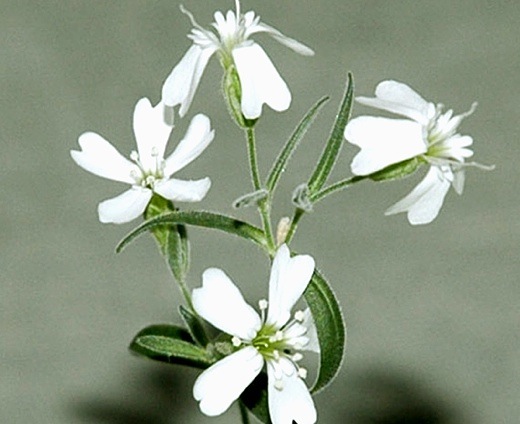 Image above: A revived 32,000-year-old narrow leaf campion. From (http://news.nationalpost.com/2012/02/21/32000-year-old-frozen-remains-used-to-grow-ancient-arctic-flower).
Image above: A revived 32,000-year-old narrow leaf campion. From (http://news.nationalpost.com/2012/02/21/32000-year-old-frozen-remains-used-to-grow-ancient-arctic-flower).
Researchers in Russia have revived a fertile plant from the remains of 32,000-year-old fruit that was found buried within the fossilized burrows of ancient squirrels deep in the Siberian ice.
The resurrected plant, from an era of woolly mammoths and saber-tooth cats, is the oldest viable multicellular living organism, according to the study published today in the Proceedings of the National Academy of Sciences. It is also the first plant returned to life from permafrost conditions, researchers said.
The discovery raises the possibility of reviving other frozen organisms with prehistoric gene pools, researchers said. Using a horticulture technique called micropropagation, researchers grew the plant from fruit tissue in a test tube of nutrients. The ones that grew roots were transferred into pots with soil and light, where they developed flowers and seeds.
“There is abundant permafrost in northern Alaska and Canada,” said Buford Price, a professor at the University of California, Berkeley, who edited the paper, in an e-mail. Finding an organism that could produce a plant with dark green leaves and small white flowers shows the benefit of pursuing goals that seem impossible, he said.
Price said he expects the researchers to “get increased funding levels to expand this work, going deeper and looking at other likely locations of animal burrows where plants were stashed.”
The fruit was found preserved 124 feet (38 meters) deep in permafrost, ice at below-freezing temperatures that hadn’t melted or been disturbed since the late Pleistocene epoch. The ancient burrows can store as many as 800,000 seeds, the report said.
Permafrost covers about 20 percent of the earth’s surface and is now under extensive investigation for preserved life that could be revived, according to the researchers led by David Gilichinsky at the Institutes of Cell Biophysics and Physicochemical and Biological Problems in Soil Science at the Russian Academy of Sciences, in Pushchino, Russia.
See also: Ea O Ka Aina: 5th oldest tree in world destroyed 1/17/12 .
No comments :
Post a Comment